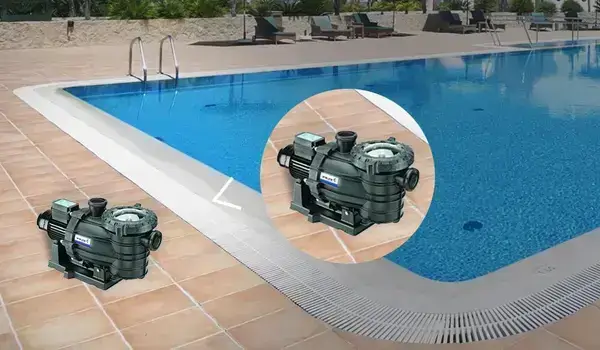Owning a swimming pool is one of life’s greatest pleasures. Whether it’s for staying cool during hot summer days, hosting poolside parties, or simply enjoying a tranquil oasis in your backyard, having a pool can be a fantastic asset. However, maintaining a clean and inviting pool requires one crucial component: the pool pump. Choosing the correct size pool pump is crucial for maintaining clear water, minimizing energy costs, and ensuring the longevity of equipment. Here are five crucial suggestions to assist you in selecting the ideal pool pump size for your oasis.
Understanding Pool Pump Basics
Oasis Before diving into the specifics, it’s important to understand what a pool pump does. The pool pump circulates water through the pool’s filtration system, removing debris, bacteria, and algae. Proper circulation ensures that chemicals are evenly distributed, keeping the water safe and clean. A pump that’s too small won’t circulate water effectively, leading to poor filtration and potential health hazards. Conversely, an oversized pump can waste energy and cause premature wear on pool equipment.
Measure Up – It’s All About Volume
To determine the right size pool pump, you first need to calculate your pool’s volume. This might seem daunting, but it’s actually quite simple. Here’s how to tackle it based on your pool’s shape:
- Rectangular Pools – Multiply length x width x average depth x 7.5 = pool’s volume in gallons
- Round Pools– Multiply diameter x diameter x average depth x 5.9 = pool’s volume in gallons
- Oval Pools – Multiply full width x full length x average depth x 6.7 = pool’s volume in gallons
Determine the Turnover Rate
After obtaining the volume, you can determine the turnover rate by dividing the volume by the flow rate (the speed of the pool water). If your pool contains 2500 gallons and water circulates at a rate of 70 GPM, it would take 357 minutes for a complete turnover, approximately equivalent to 6 hours.
Consider Water Features and More
Is there any additional entertainment in your pool, such as waterfalls, fountains, or jets? These characteristics necessitate extra water flow from your pump. Check the pool equipment manuals or manufacturer websites to determine the specific flow rate needed for each feature. Add this extra flow rate to your minimum flow rate to get your final target flow rate.
Total Dynamic Head (TDH)
As water travels through your pool’s pipes and equipment, it encounters friction, which reduces the flow rate. This is called head loss. Total Dynamic Head (TDH) is a measure of the total amount of head loss in your pool system. Unfortunately, calculating TDH can be a bit complex and often requires consulting a pool professional. However, some pool pump manufacturers provide online tools or charts that estimate TDH based on pool size and pipe configuration. Adding the estimated TDH to your target flow rate will give you the ideal pump capacity to overcome friction and ensure optimal performance.
Consider Variable Speed Pumps – Energy Efficiency Champions
Traditional pool pumps run at a single speed, which can be quite energy-consuming. Variable speed pumps, on the other hand, allow you to adjust the pump speed to match your pool’s needs. Running the pump at a lower speed during off-peak hours can significantly reduce energy consumption while still providing adequate filtration. The initial investment in a variable-speed pump might be higher, but the long-term energy savings can be substantial. For the average pool, the 1.5 HP variable speed pumps are best suited to the pipe size, water volume and pool filter design.
Conclusion
Choosing the right size pool pump is an investment that ensures sparkling clean water, efficient operation, and lower energy costs. By following these essential tips, you’ll be well on your way to selecting the perfect pump for your pool. Remember, the calculations provided are a helpful starting point. If you have a complex pool layout, and numerous water features, or are unsure about TDH, consulting a pool professional is highly recommended. They can assess your specific needs and recommend the ideal pump size for a crystal-clear oasis you can enjoy all season.
